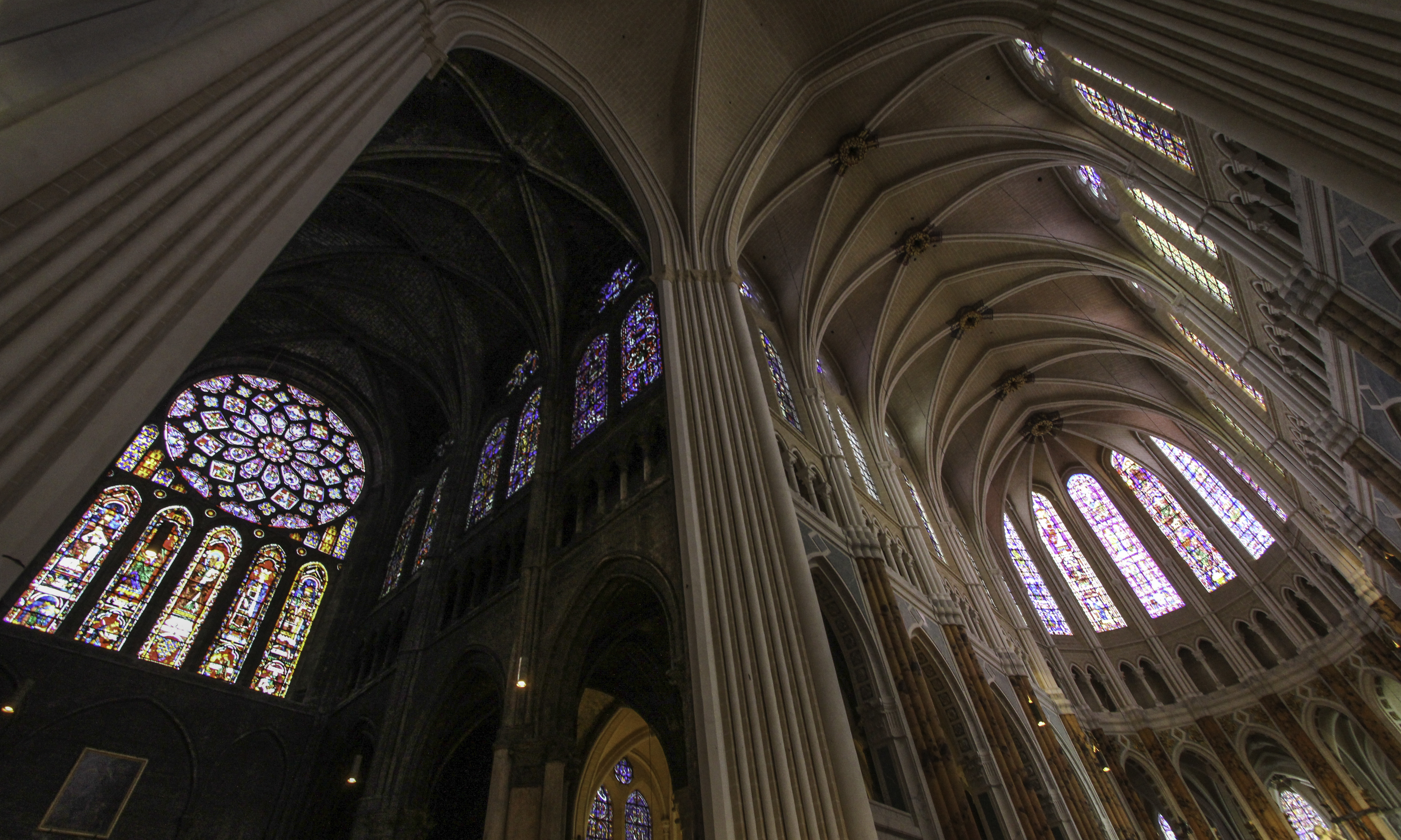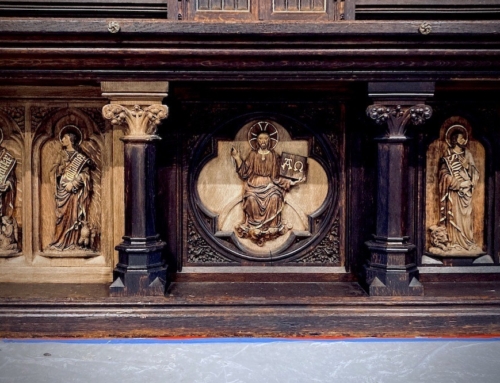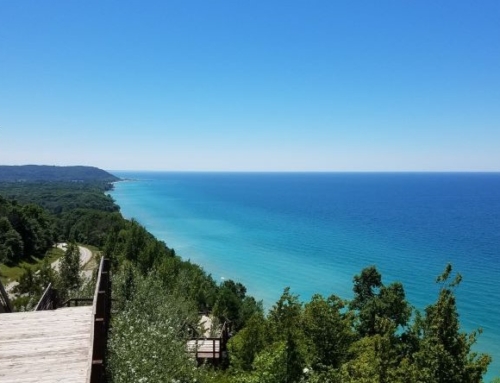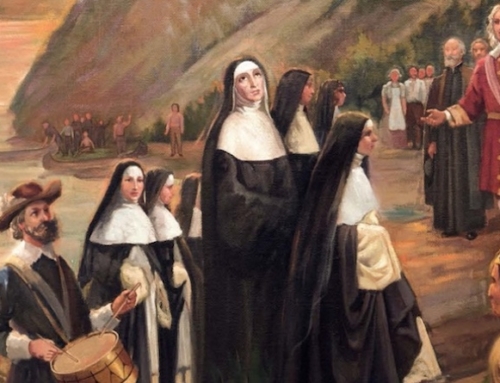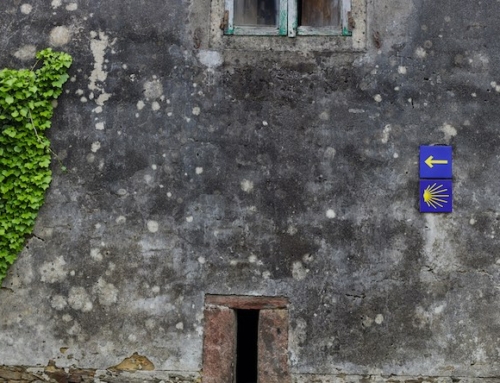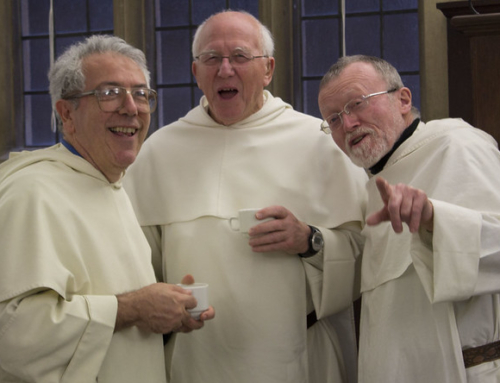What we have seen with our eyes,
what we looked upon
and touched with our hands
concerns the Word of life—
for the life was made visible;
we have seen it and testify to it
and proclaim to you the eternal life
that was with the Father and was made visible to us—
what we have seen and heard
we proclaim now to you,
so that you too may have fellowship with us;
for our fellowship is with the Father
and with his Son, Jesus Christ.
-1 John 1:1-4
We are fleshly creatures, and we cannot deny that.
Our culture confuses the reality of the human person’s existence as body and soul. Deniers of the soul reduce us to machines or emphasize the necessity to enjoy the pleasures of the body.
Deniers of the body are rare because only a fool or a philosopher could open his eyes in the morning and say that he does not have eyes. Nevertheless, those who diminish the body to a vessel are legion. These sometimes will go the way of the epicure, concluding that the body does not matter, so one may act with impunity. More often, these begin to detest anything bodily. In years past, these included the Manichees, the Albigensians, and the Iconoclasts. In our own day, they include those who say that “perfect abstinence is better than perfect moderation” or snip out “worshiping God in spirit and truth” (Jn. 4:24) as an excuse to ignore sacrament and liturgy and build ugly churches.
But we are, in fact, bodily. The penances of the saints speak to the importance of the body. Like runners in a race, they train the body for the sake of the soul. The horror that we feel about death in general speaks to the importance of the body. A soul without its body, though perhaps in heaven—perfectly happy according to the soul—still requires its own body back for its joy to be full. The Assumption of the Blessed Virgin Mary body and soul into heaven points to the perfection of the union of body and soul and our continued hope for the resurrection of the body.
God created us thus, spirit and flesh, body and soul, highest among the animals, and yet below the angels. When we fell from grace into the pleasures of the fleshly world and the beauty of our own souls, forgetting Him who created us with pleasure-feeling flesh and beautiful souls, He came in the flesh to speak to us in fleshly ways that He knew we could understand. He continues to speak to us in a fleshly, visible, tactile way, primarily in the sacraments, but also in nature and in art.
The Cathedral of Notre Dame in Chartres beautifully displays the fleshiness of Catholicism. The massive stone structure with its mismatched steeples can be seen for miles, overshadowing the small town that built it. The cold of the white stone, the rich acoustic echo of the Gothic structure, and the smell of incense hanging in the air raise the mind to God. All the more so does the light streaming through the 13th-century stained glass. Each window tells some Bible story, a picture book in glass. The windows aid the preacher in his preaching and remind the visitor of the glories of God throughout the ages. Hence, through our body’s physical interaction with beauties of this lovely structure, we learn of God and our true purpose.
Through the body we also offer our worship. Naturally, we can consider gestures of prayer, such as the Nine Ways of Prayer of Saint Dominic. Equally important, though, is the offering of our daily labors to the Lord. In almost every window at Chartres, a panel displays the trade of those who donated the window. Stonemasons, bakers, and furriers, cartwrights and wainwrights, nobles, clergy, and farmers each find their place in the glass. Through the labor of their hands, each contributed to the society and offered what they could to the worship of God. In these gorgeous windows, beautiful to the eyes and elevating the mind, the patrons display their proper worship of God, both in their prayers and in their labors.
We are fleshly creatures, and that flesh can be messy. But our flesh, though weak, must still give glory to God in all things, for He took on flesh to raise even our flesh back to its former glory, the glory of glorifying its Creator.
✠
Photo by Fr. Lawrence Lew, O.P. (used with permission)

